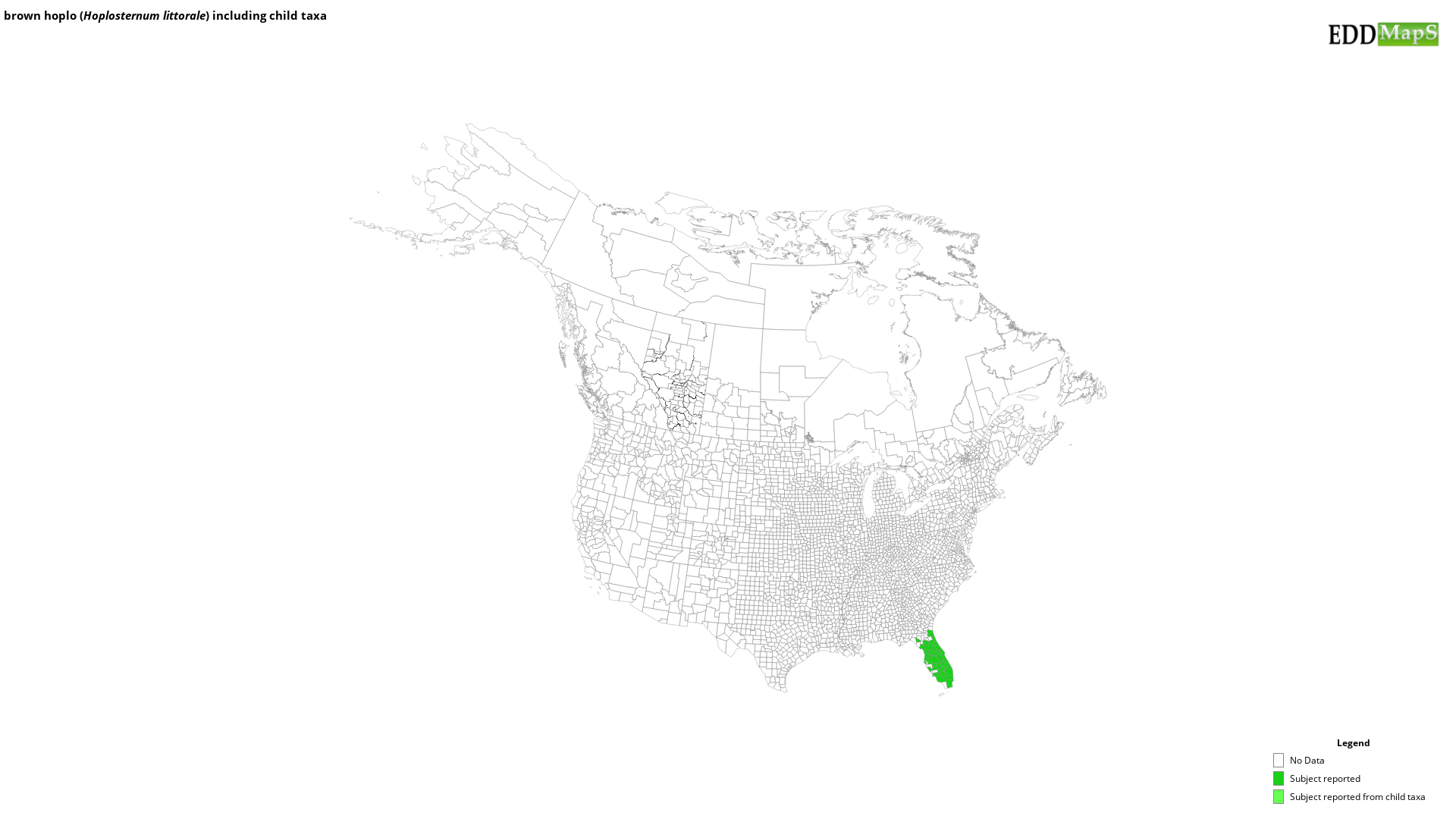brown hoplo
(Hoplosternum littorale)
This species is Introduced in the United States
Origin
Hoplosternum littorale is native to tropical South America. The means of Brown hoplo introduction to the United States is unknown.
Life Cycle
Adult H. littorale are 8.7 in. (22 cm) in length and dark brown to black in coloration. Sexually dimorphic, male H. littorale are larger than females and possess large pectoral fin spines with adjacent fat deposits during breeding. Large pectoral-fin spines are used for defense. H. littorale are benthic scavengers that consume benthic micro-crustaceans, aquatic insect larvae, detritus, and plant matter. H. littorale are found in freshwater habitats that include slow-moving rivers, streams, pools, and canals.
Distribution
H. littorale have been found in Georgia and are established in Florida.
Control Efforts
The impact of H. littorale in the United States is unknown. However, there is concern about Brown hoplo invading natural freshwater wetlands and coastal marshes in Florida and its negative effects on benthic invertebrate communities.
https://nas.er.usgs.gov/queries/FactSheet.aspx?SpeciesID=338
https://www.fws.gov/injuriouswildlife/pdf_files/Hoplosternu_littorale_WEB_9-15-14.pdf
Hoplosternum littorale is native to tropical South America. The means of Brown hoplo introduction to the United States is unknown.
Life Cycle
Adult H. littorale are 8.7 in. (22 cm) in length and dark brown to black in coloration. Sexually dimorphic, male H. littorale are larger than females and possess large pectoral fin spines with adjacent fat deposits during breeding. Large pectoral-fin spines are used for defense. H. littorale are benthic scavengers that consume benthic micro-crustaceans, aquatic insect larvae, detritus, and plant matter. H. littorale are found in freshwater habitats that include slow-moving rivers, streams, pools, and canals.
Distribution
H. littorale have been found in Georgia and are established in Florida.
Control Efforts
The impact of H. littorale in the United States is unknown. However, there is concern about Brown hoplo invading natural freshwater wetlands and coastal marshes in Florida and its negative effects on benthic invertebrate communities.
https://nas.er.usgs.gov/queries/FactSheet.aspx?SpeciesID=338
https://www.fws.gov/injuriouswildlife/pdf_files/Hoplosternu_littorale_WEB_9-15-14.pdf
Resources
- Florida's Exotic Wildlife Species Detail - Florida Fish and Wildlife Conservation Commission
Selected Images
Maps
EDDMapS Distribution - This map is incomplete and is based only on current site and county level reports made by experts, herbaria, and literature. For more information, visit www.eddmaps.org
State Lists - This map identifies those states that have this species on their invasive species list or law.
Invasive Listing Sources
Taxonomic Rank
| Domain: Eukarya |
| Kingdom: Animalia |
| Phylum: Chordata |
| Subphylum: Vertebrata |
| Class: Actinopterygii |
| Subclass: Neopterygii |
| Order: Siluriformes |
| Family: Callichthyidae |
| Genus: Hoplosternum |
| Hoplosternum littorale |
References
Common Name Reference: Integrated Taxonomic Information System on-line database.
Scientific Name Reference: Integrated Taxonomic Information System on-line database.


